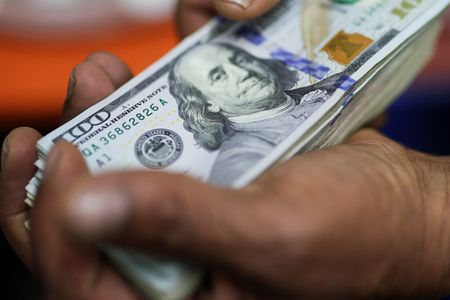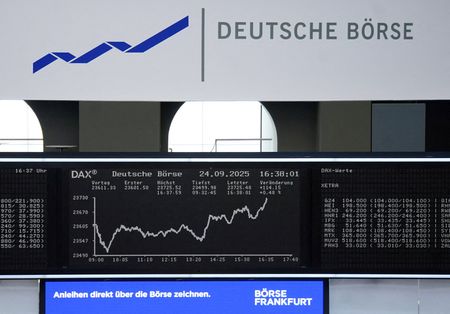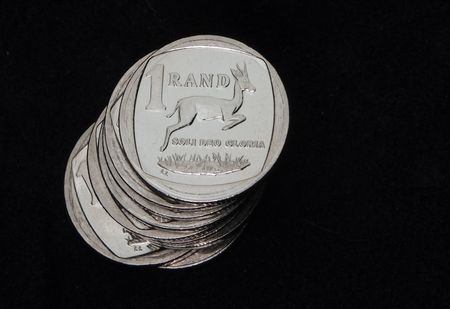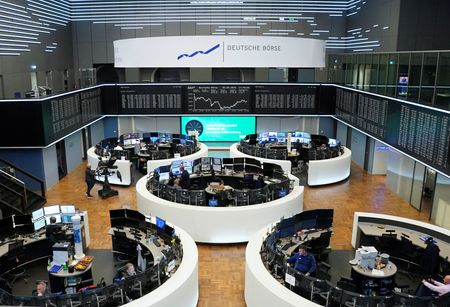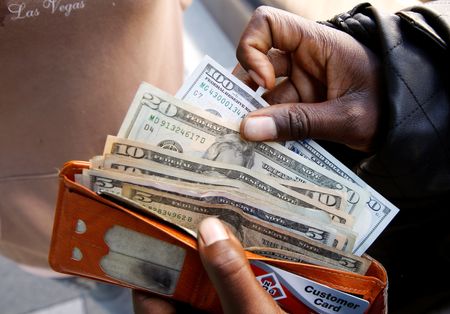By Ankur Banerjee and Amanda Cooper
SINGAPORE/LONDON (Reuters) -The U.S. dollar held steady on Tuesday ahead of a possible U.S. government shutdown that could disrupt the release of the monthly jobs report this week, while the Australian dollar rallied after the central bank struck a cautious tone on inflation.
Investor focus is on the looming U.S. shutdown. Government funding expires at midnight on Tuesday (0400 GMT) unless Republicans and Democrats agree to a last-minute temporary spending deal.
The U.S. Labor and Commerce departments said their statistics agencies would halt economic data releases in the event of a partial government shutdown, including closely watched employment data for September.
The payrolls report, crucial for decision-making by policymakers at the Federal Reserve, is scheduled for Friday, and a delay could leave the central bank flying blind on the labour market.
Traders are currently pricing in 42 basis points of Fed easing by December and a total of 104 basis points by the end of 2026, about 25 bps less than levels seen in mid-September.
“If a shutdown is brief, the Fed will largely ignore it,” said Elias Haddad, senior markets strategist at Brown Brothers Harriman.
“However, a prolonged shutdown (more than two weeks), increases the downside risk to growth and raises the likelihood of a more accommodative Fed.”
MUFG strategist Lee Hardman said the dollar was coming under pressure from growing U.S. political uncertainty. The dollar index, which has already fallen nearly 10% this year, was last down 0.1% on the day at 97.785.
Losses were most notable against traditional safe-haven currencies that carry lower yields, like the Japanese yen and the Swiss franc.
The yen shook off a bout of overnight weakness to leave the dollar down 0.4% at 148.02 yen. Investors considered the Bank of Japan’s summary of opinions for its September meeting at which the central bank debated the possibility of a near-term rate hike. Markets show traders currently place a 60% chance on a December rise.
Strategists at ING say selling the dollar against yen could prove a popular play should the U.S. government shutdown materialise. The pair has risen 0.7% this month, as the dollar has muscled higher, but has fallen nearly 6% so far in 2025, as investors have bought into the idea that Japanese rates are likely to slowly rise, while those in the United States fall.
“The dollar has suffered from rising risk of a U.S. government shutdown and falling oil prices since the weekend, with the yen emerging as the top performer,” ING’s Francesco Pesole said.
“A lower dollar/yen may well remain the favourite trade during the shutdown. It lost 1.5% during the 2018-19 shutdown, and is currently trading 1% above its short-term fair value, according to our model,” he said.
The Swiss franc firmed, pushing the dollar down 0.2% to 0.796 francs, but was steady against the euro at 0.9347 and against the pound.
The Australian dollar, meanwhile, was last up 0.4% at $0.6604, after the Reserve Bank of Australia, which has lowered borrowing costs three times this year, held rates steady as expected. The bank said recent data suggested inflation might be higher than forecast in the third quarter and the economic outlook remained uncertain.
In Europe, sterling shrugged off data that showed Britain’s economy expanded by 0.3% between April and June this year, while the current account deficit grew in the three months to the end of June. The deficit totalled 28.939 billion pounds ($38.8 billion), well above a poll forecast of 24.9 billion pounds and equivalent to 3.8% of GDP, up from 2.8% in the first quarter of 2025.
The pound was last up 0.1% at $1.3448 and a touch weaker against the euro, which was up 0.1% at 87.34 pence. The euro edged up against the dollar to $1.1742.
(Additional reporting by Ankur Banerjee in SingaporeEditing by Shri Navaratnam and Lincoln Feast.)

